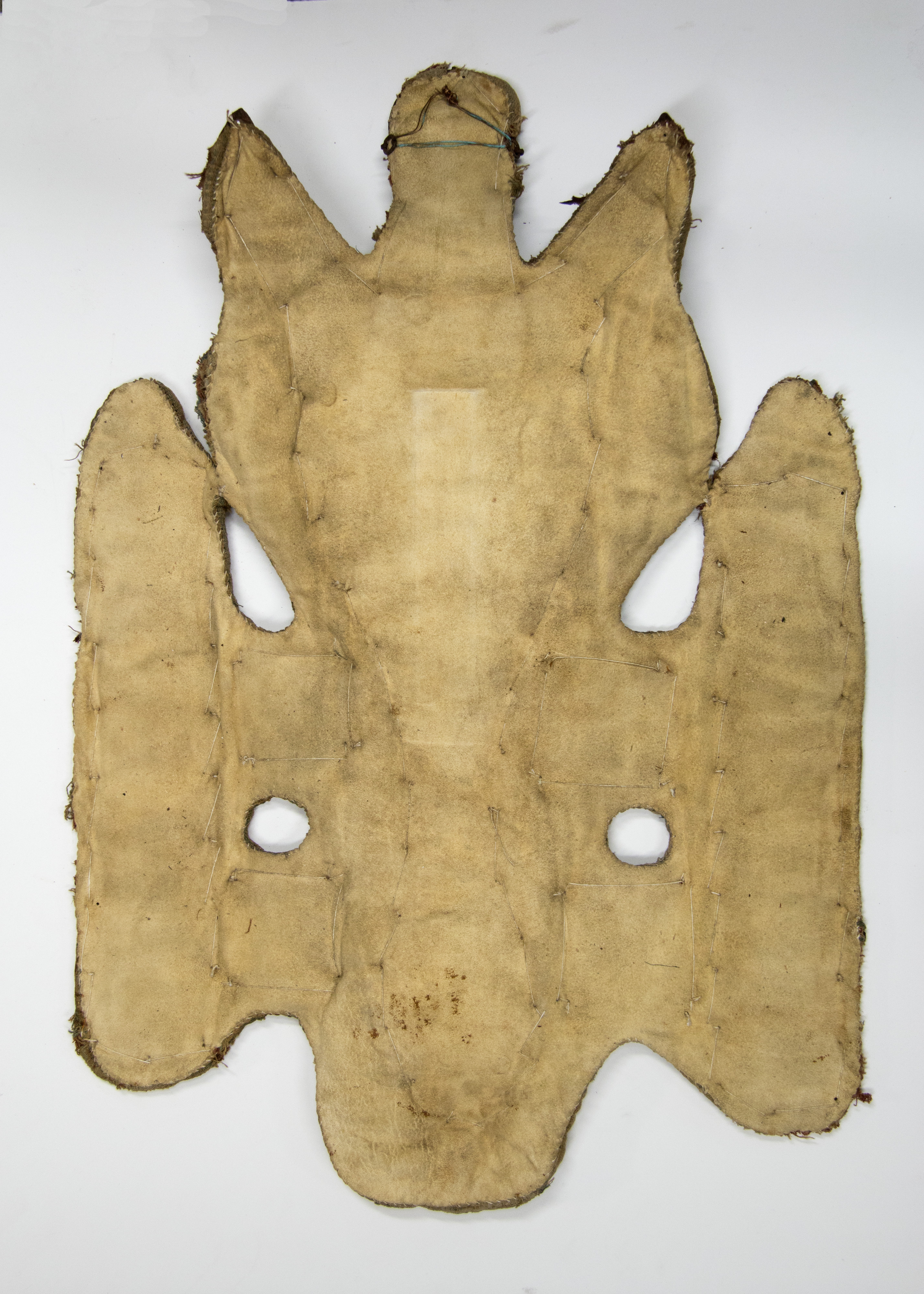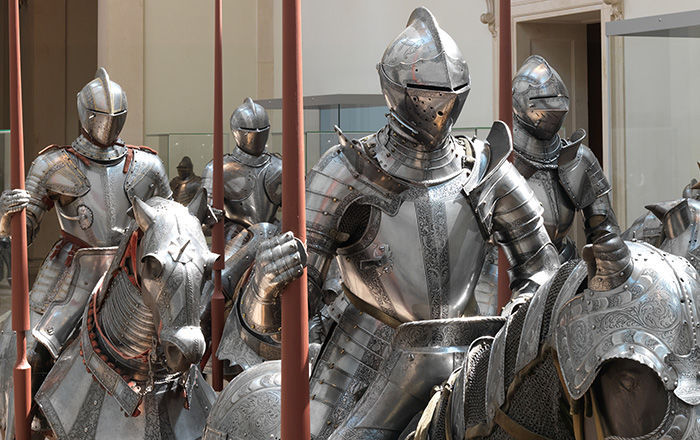Shaffron
Not on view
Although relatively unsophisticated in its manufacture, this shaffron is exceptionally rare, possibly unique, for its completeness, retaining all of its original plates and its textile backing. Most other surviving Indian shaffrons of this type consist solely of the long, ogival main plate, the shape of which is the defining feature of these shaffrons. A prime example of the type is a shaffron in the Metropolitan Museum's collection (acc. no. 2008.197). The latter is important both because it is very finely made and because it is inscribed with a date, A.H. 1062/A.D. 1617–18), and the name of a sultan of Golconda, providing a chronological and geographical context for all similar shaffrons.
This image cannot be enlarged, viewed at full screen, or downloaded.
This artwork is meant to be viewed from right to left. Scroll left to view more.



